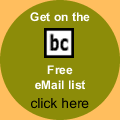
|
|||||||||||||||||||||
|
||||||||||||||||||||||||||||
In Maricopa County, Arizona (Phoenix), Sheriff Joe Arpaio is the self-proclaimed “toughest sheriff in America.” He requires his inmates “to enroll in chain gangs to perform various community services. The alternative is lockdown with three other inmates in an 8- by 12-foot cell, for 23 hours a day. Chain gang participants wear uniforms with black and white stripes, to “make examples of the bad prisoners to the community.” He also makes them wear pink underwear. More than 2,000 inmates are placed in tents, outside the jail. Since they are there in the summer, you can imagine what that may be like where temperatures average well over 100 degrees. Most of the 8,000 or so who reside in his jail are awaiting trial simply because they could not afford bail. Others are serving short sentences. Another report noted that he had 15 women “padlocked together by the ankle, five to each chain, and marched military style out to a van that transported them to their work site – a county cemetery half an hour out of the city in the desert. The women had to bury the bodies of indigents who had died in the streets or in the hospital without family and without the money to pay for a proper funeral.” In Ohio, another ultra-conservative Sheriff has introduced chain gangs. Florida has also introduced chain gangs. Chain gangs are obviously linked with slavery. One report noted that chain gangs had been re-introduced in Alabama, where they became “a new roadside attraction.” A very popular one apparently, reflected in the following statement by a spectator: “I love seeing ‘em in chains. They ought to make them pick cotton.” The writer reporting on this scene had this insightful comment:
The connection with slavery did not escape notice of the Southern Christian Leadership Conference as they filed a complaint noting that 60 percent of the Alabama’s inmates are black.
Most of the arguments put forth by supporters revolve around two issues, both of which ignore race: saving money and deterrence. Maricopa County Sheriff Joe Arpaio uses old-fashioned common-sense deterrence logic, saying that “I use it for deterrence to fight crime. I put them right on the street where everyone can see them. If a kid asks his mother, she can tell them this is what happens to people who break the law.” When inmates complain he merely says “If you don't like it, don't come back.” However, a spokeswoman in his jail told a reporter that “60 percent of inmates did in fact come back for more than one term.” The Sheriff of Butler County, Ohio said “I want ‘em to leave here with a bad feeling in their mouth.” It’s the familiar theme that we are “soft on crime.” As for money saved, one Sheriff stated that having work crews out six days per week picking up trash, doing work at public parks and for nonprofit organizations “saves taxpayers up to $160,000 per month, or about $1.9 million per year.” The fact that most of these prisoners are black seems to escape the notice of supporters of chain gangs, but not several critics. One critic’s comment, at the time Alabama re-introduced chain gangs, sounds vaguely familiar: “A group of men, most of them black, chained to each other like animals, being marched along dusty country roads to perform meaningless but painful labor: here is an inspiring vignette for the direction taken by the American criminal justice system.” When Florida followed Alabama’s lead and re-introduced the chain gang, Amnesty International was quick to point out the obvious:
This report also noted several violations of International Human Rights provisions, to wit: Amnesty International believes that the practice of using chain gangs constitutes cruel, inhuman or degrading treatment, prohibited under Article 7 of the International Covenant on Civil and Political Rights, (ICCPR) ratified by the US Government on 8 June 1992. Article 10 of the ICCPR says: All persons deprived of their liberty shall be treated with humanity and with respect for the inherent dignity of the human person.
Article 33 of the United Nations Standard Minimum Rules for the Treatment of Prisoners (SMR) states: instruments of restraint, such as handcuffs, chains, irons and strait jackets, shall never be applied as a punishment. Furthermore, chains or irons shall not be used as restraints. Article 45 (1) of the SMR states: When prisoners are being removed to or from an institution, they shall be exposed to public view as little as possible, and proper safeguards shall be adopted to protect them from insult, curiosity and publicity in any form. The most recent data show that nationwide blacks are far more likely to find themselves inside a local jail than any other racial group: as of mid-2004, their incarceration rate stood at 765, more than four times that of whites (160) and about three times the rate for Hispanics (262). Altogether, racial minorities constituted about 60 percent of jail inmates. Racial overrepresentation is even more dramatic within the largest urban jails. The proportion of jail inmates who are racial minorities is greater than 50 percent in most urban jails, with some reaching higher than 80 percent (Los Angeles, 85.5%, Chicago, 90%, New York City, 93%, Philadelphia and Baltimore, 86%, Detroit, 85%). The same can be said with our prison population. At midyear, 2004 the overall incarceration rate (prisons plus jails) for black males was 4,919 (per 100,000) compared to only 717 for white males and 1,717 for Hispanic males; for women, the rate for blacks was 359 compared to 81 for white women and 143 for Hispanic women. It has also been noted that the lifetime chances of a black male of going to prison is about one-third! Such a dramatic statistic needs more detailed elaboration, which will be done in the next section. Chances of Going to Prison Becoming Greater for Blacks “The lifetime chances of going to prison reached 6.6% in 2001, up from 1.9% in 1974.” This is the title of figure 3 in a recent report from the Bureau of Justice Statistics. Even more revealing, however, is what is found in Table 9, part of which is reprinted below. Lifetime chances of going to State of Federal prison for the first time.
Source: Bonczar, T. P. (2003). Prevalence of Imprisonment in the U.S. Population, 1974-2001. Washington, DC: Bureau of Justice Statistics, August. Another table in this same report reveals that the percentage of the adult population “ever incarcerated” in a prison as of 2001 was 8.5% for black males between the age of 18 and 24 (compared to only 1.1% of white males in that age group); for black males 25-34 the percentage was 20.4, compared to 2.8% of white males; for ages 35-44 the percentage of black males was 22 compared to 3.5 for white males. The percentages for Hispanic males stood between whites and blacks (4%, 9% and 10% respectively). The differences for females according to race were similar. The report clearly shows that with each new cohort in the past 50 plus years the chances of going to prison has risen. In 2001 about 2.7 percent of all adults had been to prison (5.6 million); by the year 2010 it is estimated that this will rise to 3.4 percent (7.7 million). Given that blacks are four or five times more likely than whites to ever experience incarceration, this suggests that by 2010 between 12 and 15 percent of all blacks will be in prison, if recent incarceration trends continue.
Another way of viewing these trends is to look at the sheer numbers. At midyear 2004, a total of 910,200 black people were in prison or jail, representing 48 percent of the total; Hispanics represented another 20 percent of the total. About 1.4 million were in prison alone and about 47% were black. Taking the above estimate for the total number in prison in 2010 (7.7 million), this means that about 3.6 million blacks will be in prison if recent trends continue. What should be noted here is that these projections do not include the probabilities of being in jail on any given day. It is hard to imagine the proportion of the black population (especially young black males) who have experienced some contact with the criminal justice system in recent years, let alone the proportion that will have had such contact by the year 2010. We know from a study by the Sentencing Project that in 1995 about one-third of black males in their 20s were somewhere in the criminal justice system (prison, jail, probation and parole). This was ten years ago and the estimate has not been updated. The most recent survey on probation and parole was for 2003. Although they do not break it down by age, at that time blacks were 30 percent of those on probation and 41 percent of those on parole. We do know that the largest proportion of black males in prison or jail is in their 20s (38%), so it would be safe to assume the same for those on probation and parole. However, we do not have the numbers on probation and parole broken down by race and age. It is probably safe to say, however, that the proportion of black males in their 20s within the criminal justice system on any given day is much greater than one-third. It is clear that what we have here is another form of slavery, a more advanced development of what I and others have called the “new American apartheid.” It may even be called a form of fascism, with the ultimate goal, like Nazi Germany, of racial extermination. Randall G. Shelden is Professor of Criminal Justice at the University of Nevada-Las Vegas. He is the author and co-author of several books on crime and criminal justice, including Controlling the Dangerous Classes: a Critical Introduction to the History of Criminal Justice, Criminal Justice in America: a Critical View, Girls, Delinquency and Juvenile Justice and Youth Gangs in American Society. His latest book is Delinquency and Juvenile Justice in American Society, to be released this summer. A more detailed version of this series, complete with footnotes, is available on his web site: www.sheldensays.com. |
||||||||||||||||||||||||||||
Your comments are always welcome. Visit the Contact Us page to send e-Mail or Feedback or Click here to send e-Mail to [email protected] e-Mail re-print notice
If you send us an e-Mail message we may publish all or part of it, unless you tell us it is not for publication. You may also request that we withhold your name. Thank you very much for your readership. |
| June 23 2005 Issue 143 |
|||||||||
|
|||||||||
|
|
|||||||||
| Printer Friendly Version | |||||||||
 |
|||||||||
 |
|||||||||
| |
|||||||||
| |
|||||||||




























